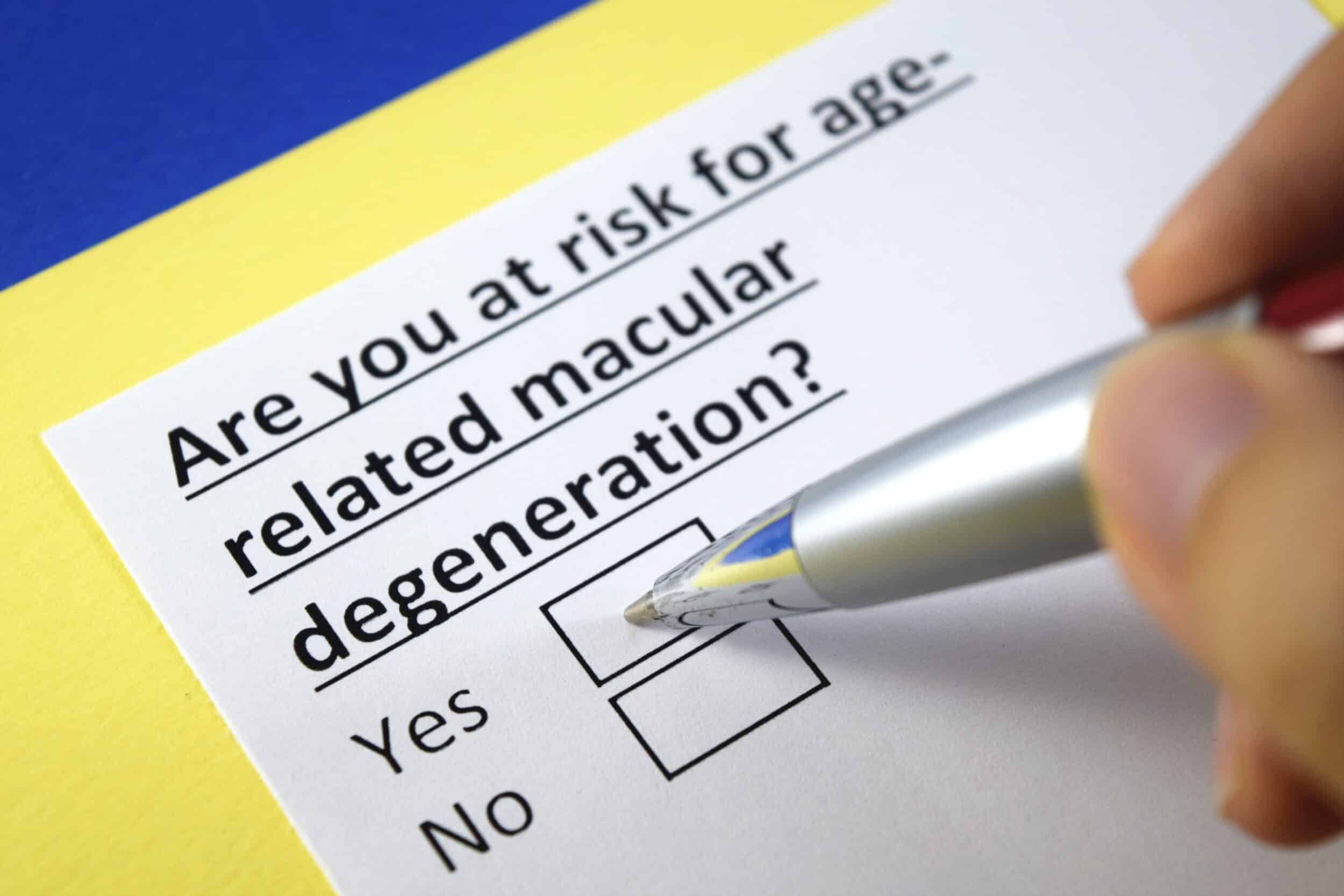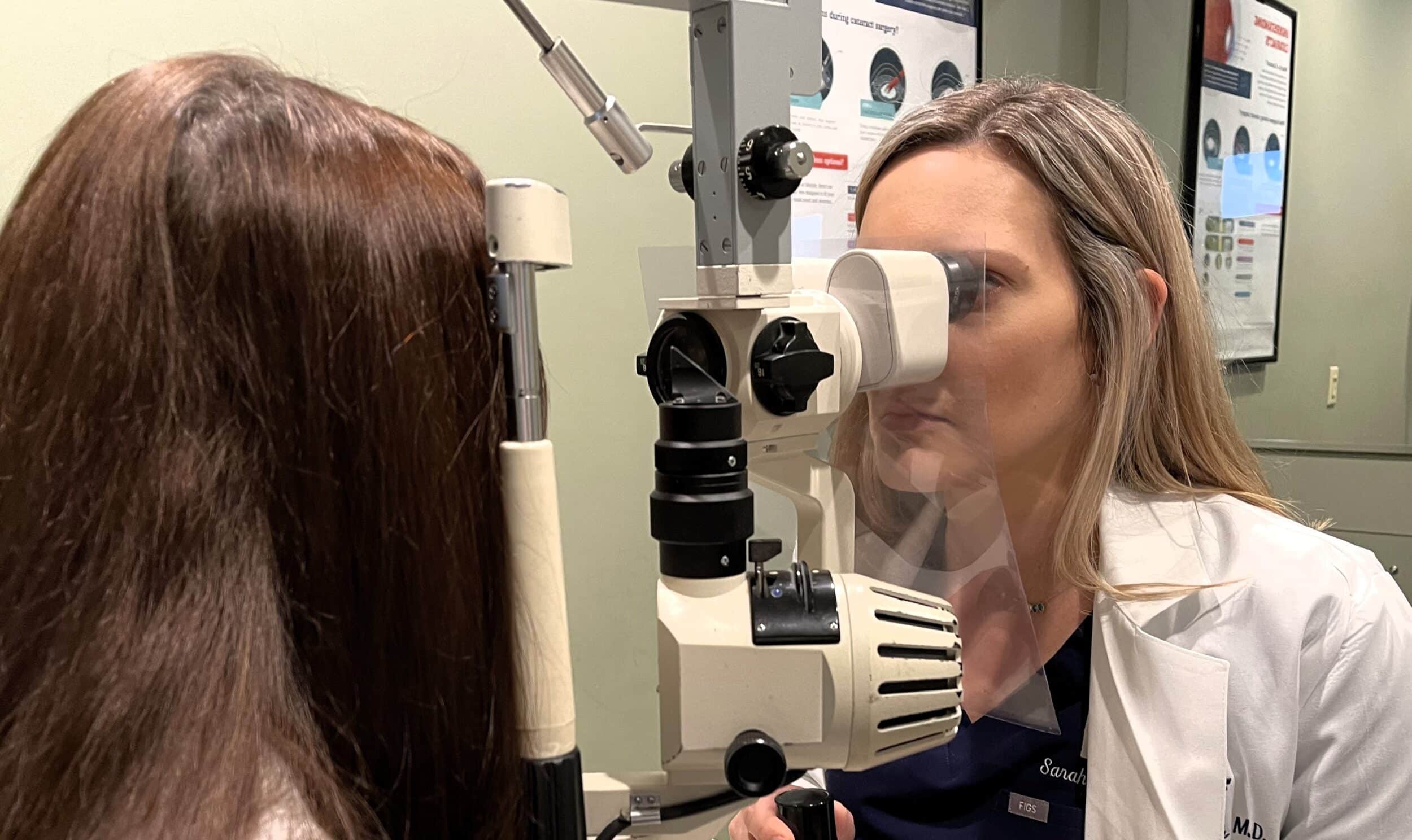
Imagine gazing at a family portrait filled with the smiling faces of those you love most. Only, you can’t see their smiles—in fact, you can barely make out their faces. The details you long to see are blurred or blanked out.
This is what people with Age-Related Macular Degeneration (AMD) experience every day. Blurring and other distortions that occur in the center of their vision can severely disrupt their quality of life.
“AMD is a disease that affects the macula, the part of the retina that enables you to see clearly in the center of your vision,” says Dr. Sarah Queck, ophthalmologist with Hattiesburg Eye Clinic. “This is caused by deterioration of the cells of the macula and accumulation of waste products that can further affect central vision.”
The U.S. Centers for Disease Control (CDC) estimates that 20 million Americans over 40—around 13% of older adults—struggle with some form of AMD, with 1.5 million of them experiencing significant visual impairment. Because of the serious threat it poses, vision care providers like Hattiesburg Eye Clinic are putting the spotlight on AMD during Age-Related Macular Degeneration Awareness Month in February.

According to Dr. Queck, there are two types of the disease: The most common is known as Dry Macular Degeneration, which develops as previously mentioned; and, a less common type called Wet Macular Degeneration. In addition to macular deterioration, the wet type involves the development of abnormal blood vessels in the eye, which leak and bleed, leading to even more severe vision loss.
The exact causes of AMD are not completely understood. However, Dr. Queck says there are a number of factors that appear to increase the risk of the disease.
“We know for sure that AMD is linked to genetics,” says Dr. Queck. “Women are more likely than men to develop it, and Caucasians more than people of African descent. Age certainly plays a role, as well as a person’s overall health and lifestyle practices.”
There are a number of visual symptoms a person can experience that might point to AMD: blurring or a blind spot in the central field of vision; straight lines that appear wavy; an inability to see fine details; troublesome glare; or problems reading in low light. Those with Wet AMD often notice these and other symptoms earlier, and with more severity than someone with Dry AMD.
Even so, you could be in the early stages of the disease and not notice anything out of the ordinary. That’s why Dr. Queck says it’s important to undergo annual eye exams to detect abnormalities associated with AMD.
“We may be able to detect the presence of drusen, yellowish deposits of lipids and proteins during an exam,” says Dr. Queck. “Certain forms of drusen are indicators for AMD.”
As with other age-related eye diseases, Dr. Queck recommends people begin annual eye exams after age 40, or earlier if they have a family history of AMD or if they notice anything abnormal with their vision.
Unfortunately, even with early detection there aren’t many treatment options for dry AMD. Nutritional supplements may benefit some patients, depending on their stage of AMD.
Wet AMD is treated with medication injected into the eye, and many patients have good treatment outcomes. “The drug injected for Wet AMD can help stop abnormal blood vessel growth and bleeding. For many people this can help them recover some lost vision.”
Up until last year there wasn’t much that could be done to treat Dry AMD. Recently, though, the U.S. Food and Drug Administration approved an injection therapy that shows promise for hindering AMD development. Even so, Dr. Queck says its widespread adoption by physicians may take some time.
“Many doctors are still assessing its benefits, weighing those against any emerging side effects,” says Dr. Queck. “It may be a while before it becomes more widely available to patients.”
The main strategy, then, for AMD patients is to adjust their lifestyles and take advantage of visual aids to compensate for any loss in vision. “Patients should take advantage of low vision specialists or occupational therapists to help them adapt to their visual impairment,” says Dr. Queck. “And, there are a number of tools and electronic aids like ‘magnifiers’ or ‘talking books and watches’ that compensate for an inability to see in detail.”
In the meantime, there are things you can do to minimize your risk of AMD.
“It’s important to take care of your health by managing chronic high blood pressure and cholesterol, and avoid tobacco smoking,” says Dr. Queck You should also eat an eye-healthy diet, particularly dark green leafy vegetables. And, always wear sunglasses outdoors to protect your eyes from UV ray exposure.”
To learn more about Age-Related Macular Degeneration, be sure to visit www.HattiesburgEyeClinic.com. To find out how Hattiesburg Eye Clinic can improve your vision health, call 601-268-5910 (or toll-free 800-624-8254) or schedule a consultation with us at www.hattiesburgeyeclinic.com/contact-us/
Note: Statistical Reference


